Sign up for The Wild
We’ll help you find the best places to hike, bike and run, as well as the perfect silent spots for meditation and yoga.
You may occasionally receive promotional content from the Los Angeles Times.
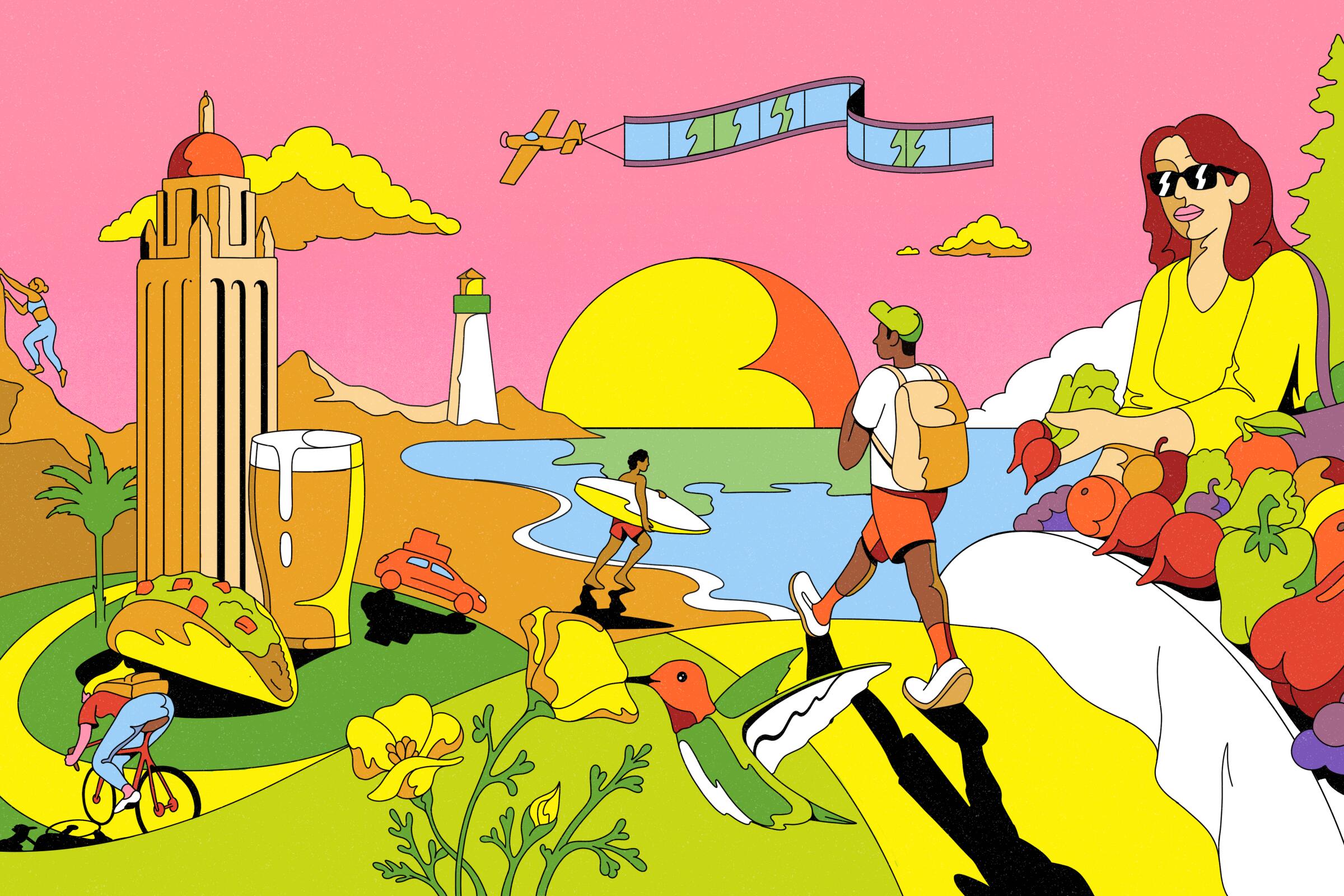
Our kid is getting ready to run away from home.
We’ve been watching the clues accumulate for months — the chats with admissions officers, the 18th birthday party, the graduation gown, the Facetime sessions with prospective dorm roommates. In a few weeks, with little regard for whether her parents are ready, she’ll leave us to start her freshman year on a campus in a redwood forest.
But there is one consolation. She’s headed to one of my favorite college towns in California, towns our family has been sampling unscientifically for the last three or four years.
We covered 11 campuses and 1,100 miles, from Camarillo to Davis. What did we learn?
As a dad, I’ve been paying attention to details like class size, graduation rates, meal plans and the bus service between campus and downtown. But I’ve also been looking at these collegiate communities through a travel writer’s lens. In fact, all of our trips and conversations have helped me come up with my own list of the state’s nine best college towns.
Whether you’re getting ready to hug a young scholar goodbye this fall (while handing them a box of laundry detergent) or simply looking for a weekend road trip, these places are worthy of a visit. They’re all over the map in every sense, from Claremont to Chico, offering options from the obvious to the arcane. My daughter’s new campus, in Santa Cruz, has a library that houses the Grateful Dead archive. But you might end up with the National Yo-Yo Museum. Or Mark Twain’s letters. Or one of this continent’s first geodesic domes.
Among the scores of schools in California, how did I choose just nine? I decided to favor smaller cities, focusing on municipalities with fewer than 120,000 residents. (Los Angeles, Pasadena, San Diego, San Francisco, you may harbor great schools, but are they really central to your identities? Consider yourselves wait-listed.) I also favored universities with more than 5,000 undergrads, campuses at least 50 years old and schools that cozy up to their towns rather than standing aloof on the outskirts. (But I let Santa Barbara in anyway, because, for better or worse, the UC campus has Goleta and Isla Vista to keep it company.)
As your freshman writing instructor might say, this exercise is clearly subjective. But it does include tips from seasoned locals — and some facts and footnotes too. So go explore these wonderful towns, arranged by their distance from Los Angeles. And don’t worry. There will be no quiz later.
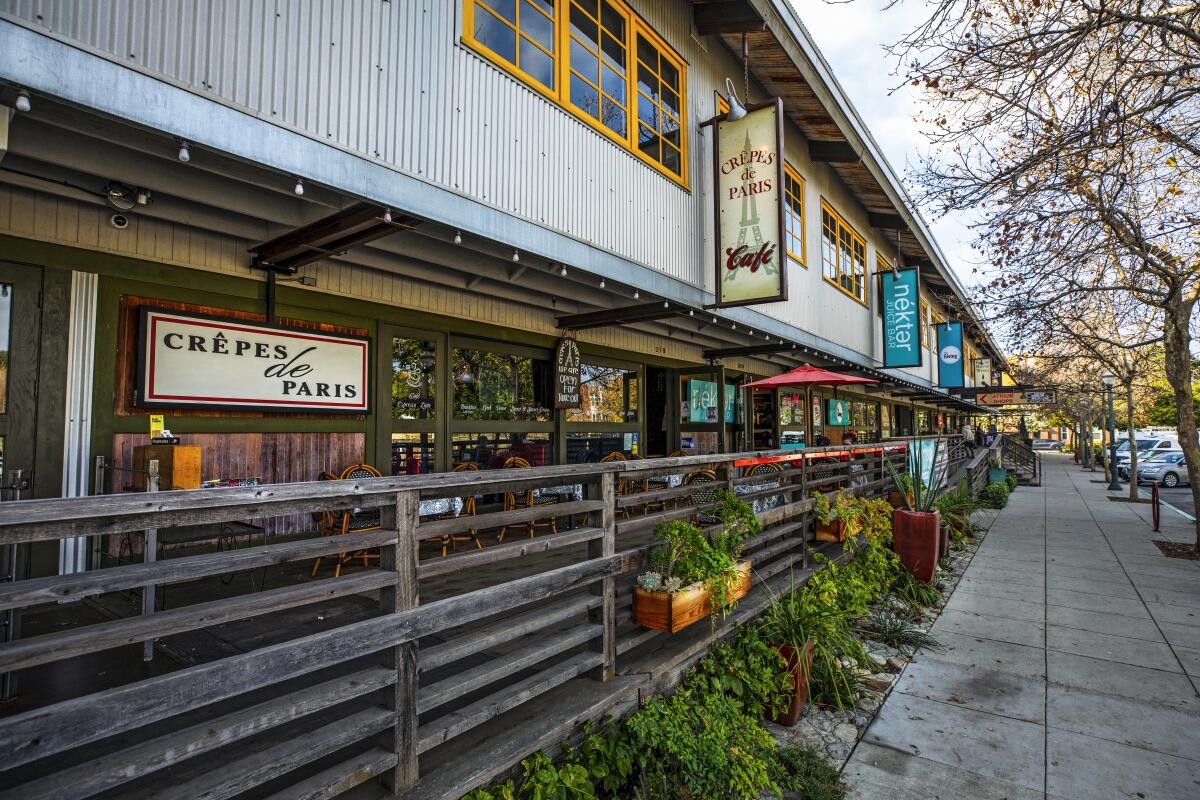
Population 35,703, stands 32 miles east of L.A. City Hall, neighbored by La Verne, Montclair and Upland.
What makes it special: Once this territory was mostly citrus and oak groves. Now this community’s core is a gathering of five colleges (and two graduate schools) neighbored by a small business district and quiet streets of Craftsman-style homes. It’s calm, it’s unassuming, it’s graceful.
Bigger picture: The commercial area is known as Claremont Village. The Packing House is a vast, converted citrus-packing structure that now houses dozens of shops and eateries. Options for visitors include the 28-room boutique hotel Casa 425; the art-house movie theaters at the Laemmle Claremont 5; and A Shop Called Quest, an Indian Hill Boulevard business devoted to comic books, graphic novels, gaming and such.
Some locals say Claremont is all about “trees and Ph.Ds,” because more than 20,000 trees grow on public property in town, not far from the California Botanic Garden and Claremont Hills Wilderness Park. But that equation probably should include retirees too: The city includes several communities designed for seniors.
The campuses: The Claremont Colleges consortium includes five undergraduate liberal arts colleges — Claremont McKenna, Harvey Mudd, Pitzer, Pomona and Scripps — along with Claremont Graduate University and Keck Graduate Institute. Though the consortium was founded in 1925, the oldest and largest college, Pomona (founded in 1887), predates Claremont cityhood. Scripps is all women.
The campuses add up to 546 acres. Undergraduate enrollment: about 5,500, plus a few thousand grad students. Team names: Sagehens (Pomona and Pitzer), and Stags and Athenas (Claremont McKenna, Harvey Mudd and Scripps). If the whole community seems suspiciously tidy and discreet for one harboring so many students, wait until you stumble onto the Golden Antlers, the colleges’ satirical news site (recent headline: “Pitzer Postpones Witch Burning Ritual Due to COVID Concerns.”)
Sample alumni: Singer-songwriter-actor Kris Kristofferson (Pomona College), artist Alison Saar (Scripps College), former U.S. Rep. Gabby Giffords (Scripps College).
Cost of staying there: Claremont has so few hotels that lodging analyst STR doesn’t release figures or average rates for the city (but besides Casa 425, there is a Doubletree by Hilton and a Motel 6). The 683 nearby Airbnb units average $126.
Claremont, on the eastern edge of L.A. County, is home to historic architecture along its streets and on the campuses of the Claremont Colleges.


Local guide: Ellen Harper
Manager of the city’s Folk Music Center, which is owned by her son, musician Ben Harper
What to do: Harper likes roaming the Scripps College campus “because they’re just such lovely grounds, and also Pitzer College because they have that big native California garden” (the John R. Rodman Arboretum).
For shopping, she recommends DeeLux, a secondhand clothing store. Unfortunately, said Harper, “We’ve lost Rhino Records” (which is moving to Montclair this summer after 48 years in Claremont). But music can be heard at the Folk Music Center’s own open-mic night (on the last Sunday of every month). Performers get five minutes each, she said, and lots of students come. “If you want to drop names, Phoebe Bridgers got her start here at our open mic. Not that long ago.”
Where to eat and drink: Harper suggests the restaurant Union on Yale (“a very nice brunch”) and Patty’s Mexican Food on Towne Avenue (for the burritos). “There’s also a new bakery called Creme that’s fabulous, very French, very tasty, very European,” she adds.
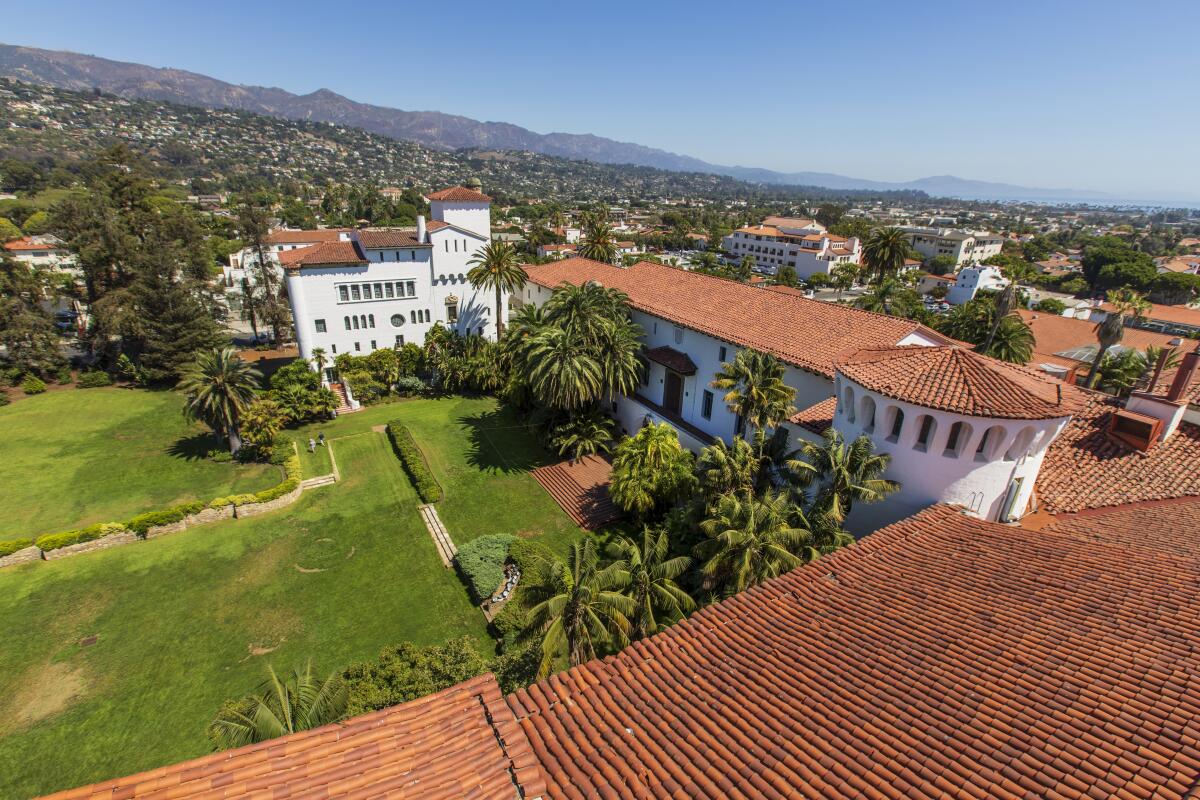
Pop. 88,255, stands 95 miles northwest of L.A. City Hall. Ten miles west of downtown, you reach the UCSB campus, the suburban city of Goleta and the unincorporated neighborhood of Isla Vista.
What makes it special: Wide beaches. Mansions on the slopes. Wine country to the northwest. Spanish Colonial architecture and Mexican food in abundance. Lots of arts philanthropy from wealthy retirees. And enough energy from students and young entrepreneurs to remake an old industrial district into a bohemian-friendly Funk Zone.
Bigger picture: Santa Barbara’s downtown, topped by red tile roofs and punctuated with palm trees, is anchored by the State Street Promenade, a car-free zone (and pandemic improvisation) that features 10 blocks of restaurants, bars and shops (between Sola and Gutierrez streets). On Tuesdays, there’s a farmers market; on Thursdays, an artisan market. Readers head for Chaucer’s Books on upper State Street or (for used and rare volumes) Lost Horizon Bookstore in Montecito. The Old Santa Barbara Mission and the Presidio offer reminders of Spanish arrival in the 18th century.
A visitor also can dig into the angry politics behind “Mexico Today,” the big 1932 David Alfaro Siqueiros mural at the Santa Barbara Museum of Art.
The campus: Founded in 1892 as a manual training school in downtown Santa Barbara, it evolved into a teachers college and later a UC. In 1954, the campus moved to its current site: 1,055 acres on a plateau overlooking the Pacific, sandwiched between Goleta and the often rowdy student area of Isla Vista.
It’s estimated that about half of Isla Vista’s 23,000 residents are UCSB students. They get to enjoy the nearby beach and bluffs along Del Playa Drive, balancing that against the noise, crowding, lack of parking and often-daunting rents common in the area. UC officials say they’re adding campus housing as fast as they can, but Goleta officials say it’s not fast enough. Students travel free to and from downtown on the Santa Barbara MTD bus line No. 24.
Undergrad enrollment: about 23,200. Team name: Gauchos.
Sample alumni: DJ Steve Aoki and singer-songwriter Jack Johnson. Dropouts include Gwyneth Paltrow.
Cost of staying there: Santa Barbara has 65 hotels that average $351.94 nightly — notably pricier than many of the other college towns in this list. Some 346 nearby Airbnb units average $453.



Local guides: (clockwise, from top left) Leah Ortega, Maritza Flores, Daniela Aguirre, Elysia Guillén and Lilli Muñoz
Co-founders of Mujeres Makers Market, a monthly pop-up retail experience featuring more than 50 vendors, all women of color
What to do: The Mujeres’ advice begins with a picnic by the rose garden at the mission. Ortega suggests a visit to SeaVees in the Funk Zone, “a local shoe company that originated in the ’60s [then shut down] and they brought it back to life. Their store is curated. So amazing. And they have this really cool mural in front by a local artist named DJ Javier.”
Where to eat and drink: “We obviously love tacos,” said Guillén, “so I’m going to Mony’s (in the Funk Zone) and Tacos Pipeye on Milpas Street. Mony’s actually catered for my wedding.” And Tacos Pipeye “is family-owned and really small, and every time you go there, you feel like you’re welcome.” (Besides the tacos, she likes the house-made specialty drinks.)
From Flores: “Corks and Crowns is a wine bar in the Funk Zone. It’s close to the beach, it has a nice view” — and on Sundays it does cupcake-and-Champagne pairings. On Sunday, Flores gravitates toward the Dart coffee shop and garden on East Yanonali Street.
Dessert advice comes from Ortega: ice cream from Piti Sukavivatanachai and Kathy Dao. The two, married, are building a brand called Creaminal Ice Cream and run a State Street Thai restaurant called Your Choice. They have created bold flavors like Thai Tea Oreo and Vietnamese Mud Pie; every Saturday at the restaurant, they make sundaes. The event is called “No Sad Sundaes.” Ortega favors the mango sticky rice sundae. “I go there every Saturday. It’s addicting.”

Population. 47,545, stands 189 miles northwest of L.A. City Hall, just a few miles from the ocean, but also just a few miles from the wine country around Paso Robles.
What makes it special: Juxtapositions. The old-school ranching people live alongside the newer wine people, who live alongside the retirees from Southern California, who mix with students on just about every trip downtown. The engineers-to-be rub up against the aspiring designers. The agricultural hills and valleys rub up against the mild Central Coast. Also, you can’t beat the sight of a gentle hill dotted with oak trees.
Bigger picture: If you know SLO mostly from breezing past on the 101, then you’ll recognize it as home of the Madonna Inn — perhaps the most irresistibly kitschy set of rooms and restaurants this state has to offer. Day-to-day SLO is different (and not so pink).
The main drag is Higuera Street, and that’s where the Thursday night Downtown SLO Farmers’ Market spreads out each week, its vendors joining a roster of downtown retailers, restaurateurs and hoteliers that had been growing for several years before the pandemic. Now there’s a chance that growth will resume.
Meanwhile, San Luis Obispo Creek keeps trickling past the Mission San Luis Obispo (founded 1772), Phoenix Books quietly peddles used volumes on Monterey Street, students keep contributing to Bubblegum Alley (off Higuera between Garden and Broad streets) and Junk Girls (also on Monterey) offers up artsy, edgy often-recycled artworks, artifacts, jewelry, custom lighting and hand-stamped cutlery.
The campus: Cal Poly, founded as a vocational high school in 1901 and expanded to its current status in 1972, is just north of downtown. The main campus is 1,321 acres (but the school also controls more than 7,500 acres of ranch land), and the school’s engineering, agriculture, architecture and environmental design programs are widely admired.
For a glimpse of the architecture program, hike from the main campus into Poly Canyon, a 2.5-mile round trip that leads to more than 20 experimental structures erected by students (with faculty approval) in the otherwise rugged, oak-studded slopes, including a geodesic dome inspired by architect and futurist R. Buckminster Fuller himself on a long-ago campus visit.
Undergrad enrollment: about 21,400. Team name: Mustangs.
Sample alumni: “Weird Al” Yankovic, NFL Hall of Fame coach John Madden, who died in 2021, and former U.S. Rep. Devin Nunes, now chief executive of Trump Media and Technology Group.
Cost of staying there: San Luis Obispo has 38 hotels that average $220.40 nightly. Some 984 nearby Airbnb units average $359.


Robert A. Flores
Retired professor and department head in agricultural education and communication at Cal Poly San Luis Obispo

Jamie S. Patton
Assistant vice president of student affairs for diversity and inclusion at Cal Poly San Luis Obispo
What to do: Chaney tries to make time for SLO Blues baseball games (they’re in the California Collegiate League, late May through August). She also likes the Sunset Drive-in. It’s one of the few old-school drive-ins remaining in the state. “The nostalgia. They still play the same little jingle, the popcorn song. And you can see two movies and camp out with your family in the back of your car. “ Other favorite spots for Chaney include the Performing Arts Center of San Luis Obispo (on the Cal Poly campus) and El Moro Elfin Forest. “It’s a walking trail through a nature preserve [near the Morro Bay estuary], and it just feels like you’re in a different world,” she said.
Distiller and forager Eric Olson leads “wildcrafting” outings in search of botanicals in San Luis Obispo County.
Flores recommends hiking the Seven Sisters (a.k.a. the Nine Sisters), a series of volcanic mountains in and around SLO. The highest (1,559 feet) is Bishop’s Peak, just west of downtown. Flores is also a longtime booster of Chaney’s employer, the Thursday night Downtown SLO Farmers’ Market.
Patton said he feels the same way about the farmers market. When family visits, “I typically make sure that they’re here on a Thursday night.” In addition to the food, music and vendors, “That’s an opportunity, especially in the summer, to really capture the diversity of San Luis Obispo, city and county. … That’s when I know they will see other folk of color in the community.” Otherwise, he said, “Many folk can go a whole day without seeing another Black man in other places in the county.”
For half-day excursions, Patton likes Shell Beach, Avila Beach and Morro Bay. And as someone raised in Philadelphia who has never lived in such a rich agricultural area, he likes to join his wife and daughters (ages 12 and 9 ½) at “u-pick” opportunities at the Cal Poly Farm. “A couple of weeks ago, we harvested mandarin oranges and peaches as a family.”
Where to eat and drink: The Creamery Marketplace “has really livened up and has a bunch of food places. And they just opened a distillery down there,” Chaney said. Farther afield, she likes Talley Vineyards (in nearby Arroyo Grande), which offers tastings and tours and was recently upgraded.
Flores likes dinner at Novo, which has a big creekside patio, and Giuseppe’s Cucina Rustica on Monterey Street. His favorite brewery: Liquid Gravity, tucked away on Clarion Street by SLO’s airport.
Patton enjoys the Firestone Grill on Higuera, which is “my go-to for at least one meal with family when they visit.” Other favorites: Taco Roco (a local chain) on Los Osos Valley Road and Capriotti’s Sandwich Shop (on Foothill Boulevard), which is part of a chain but makes “the best cheese steak outside of the city of Philadelphia. I had that last night.”
There’s also the do-it-yourself dining option. Flores notes that anyone interested in grilling can buy Cal Poly Meats (processed on campus) at the Campus and Village markets or the Cal Poly Meats storefront (Thursday through Saturday) on Stenner Creek Road at the northern end of campus. (You might need some Cal Poly wine to go with that.)
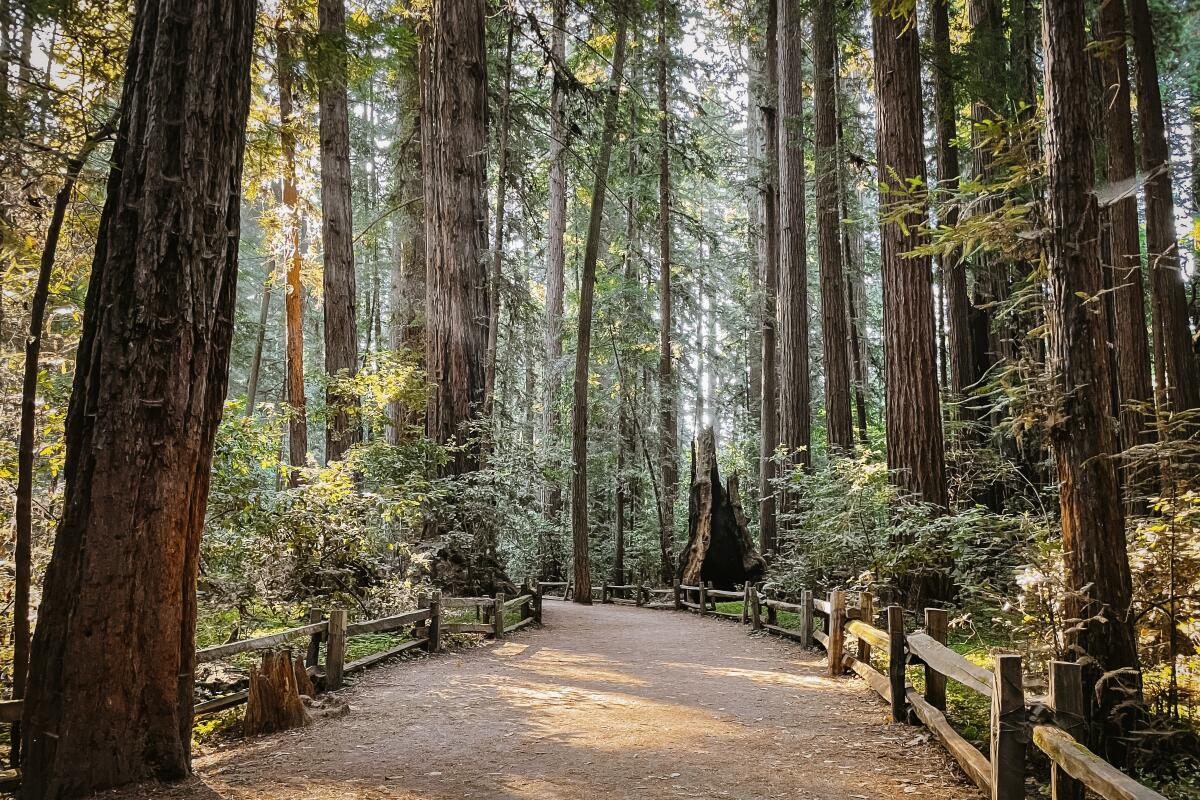
Population 61,950, stands 73 miles south of San Francisco, neighbored by the communities of Davenport to the west and Capitola, Soquel and Aptos to the east.
What makes it special: Well, there are the 6-inch-long yellow slugs that creep around the forest floor after every rain. There’s also the idea of an Oxford-inspired cluster of colleges plopped in the middle of a redwood forest with tasty waves close at hand.
Bigger picture: Landmarks include the historic Beach Boardwalk (whose wooden roller coaster is nearly a century old); the Santa Cruz Wharf (restaurants, shops, bocce, boat and kayak rentals); and the tiny Santa Cruz Surfing Museum at Lighthouse Point on West Cliff Drive.
North of town and near the UC Santa Cruz campus, hikers and mountain bikers like 7,000-acre Wilder Ranch State Park, a former dairy operation that slopes from Ben Lomond toward the sea with 35 miles of trails.
The campus: One of the UC system’s younger campuses, UCSC opened in 1965 on the western side of the city. Its facilities are spread among 2,000 acres of redwood forest and meadows. Students circulate among 10 colleges. Undergraduate enrollment: about 17,000, often joined by roaming deer. The McHenry Library houses the Grateful Dead Archive. Team name: Banana Slugs. But no football team.
Sample alumni: Author and academic bell hooks got her PhD at UCSC. Conductor Kent Nagano got his BA, as did actress Maya Rudolph. Dropout: Jello Biafra, former singer for the Dead Kennedys.
Cost of staying there: Santa Cruz has 53 hotels that average $236.31 nightly. Some 874 nearby Airbnb units average $296.

What to do: Hike Pogonip, a 640-acre sloping open space that sprawls between the southern edge of the UC campus and the northern end of downtown. (The name apparently is derived from the Shoshone word for “icy fog.”) “You have these sweeping meadow views,” said Coonerty Protti. “And dogs are welcome.” But that’s not her favorite.
“My favorite place on the whole face of this Earth is West Cliff Drive. For hiking, surfing, walking, watching people surf, butterfly scouting, boogie boarding. ... You can sit and watch the sunset. You can picnic. You can walk your dog. You can do hula-hooping at Lighthouse Point.”
At the western end of West Cliff Drive (which is about 3 miles long) is Natural Bridges State Beach. About 10 miles farther up the coast in Davenport, the organic Swanton Berry Farm has a stand and pick-your-own strawberries, kiwis and olallieberries (depending on the season).
Where to shop, eat and drink: Coonerty Protti says downtown (where her bookshop has been for 56 years) “is alive and bursting with energy,” especially along Pacific Avenue and Front Street. Beyond the retailers, she suggests that Zoccoli’s Deli has “the best sandwiches in the world,” not far from the restaurants of Abbott Square Market and the Walnut Avenue Cafe (“great brunch”). On the city’s western side, she has enjoyed the long-standing Avanti Restaurant on Mission Street (“my book club meets there once a month”); and Vim Dining and Desserts (whose chef is Santa Cruz native Jesikah Stolaroff).
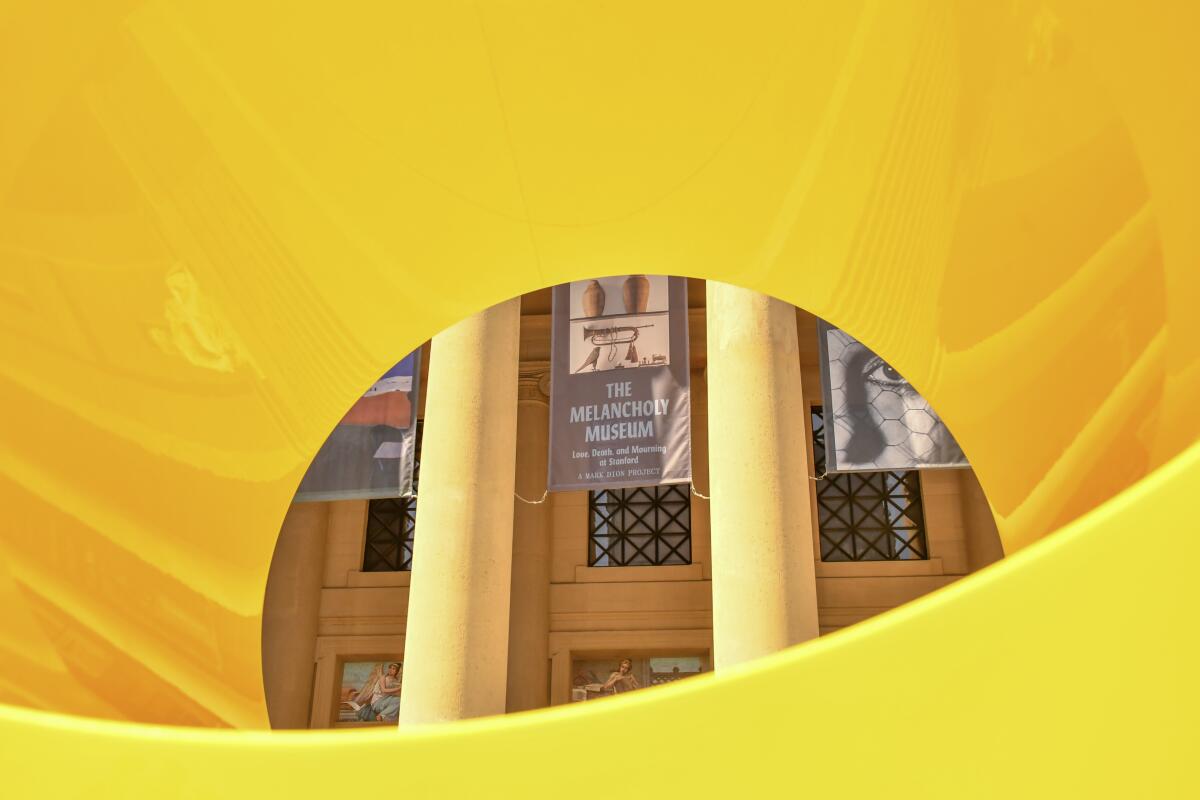
Population 66,680, stands 41 miles south of San Francisco, neighbored by Menlo Park and East Palo Alto, refulgent with tech startup affluence. (Median home value: $3.9 million.)
What makes it special: Thousands of brainiacs and budding entrepreneurs converging upon a worldly suburb 40 minutes’ drive from San Francisco. Also, about 66,000 trees throwing pleasant shade.
Bigger picture: Landscape designer Frederick Law Olmsted, who had a hand in Manhattan’s Central Park, the U.S. Capitol grounds and the Biltmore Estate in Asheville, N.C., master-planned the Stanford campus on a former stock farm. The nearby Stanford Shopping Center, full of luxury brands, is built on land still owned by the university. The former President Hotel on University Avenue is due to reopen late this year as the Graduate Palo Alto, a hotel with a nostalgic collegiate theme and rooftop bar.
The bookstore options are brilliant. Kepler’s Books & Magazines in nearby Menlo Park goes back to 1955 (Jerry Garcia hung out there before starting the Grateful Dead) and has died and come back to life at least once. And the Stanford campus bookstore has a wider variety than I’ve ever found in a college bookshop, some 130,000 titles.
Great day-trip spots nearby: Filoli Estate and Gardens and the Computer History Museum in Mountain View. Also, the Palo Alto garage where Hewlett-Packard was born in 1939 is part of a private home, but you can drive slowly past (perhaps while contemplating the fact that printer ink now often costs more than blood or Champagne). It’s at 367 Addison Ave.
The campus: Founded in 1885 by railroad magnate Leland Stanford and nicknamed “the Farm,” the Stanford campus covers 8,180 acres. If the Berkeley campus resembles Boris Johnson’s haircut on a windy day, then Stanford’s looks like Gov. Gavin Newsom’s after a morning at the salon.
Undergrad enrollment: about 6,400. Team name (since 1981): the Cardinal.
Most visitors enter along Palm Drive (whose trees recently inspired a remarkable alumni examination of the founder’s hypocrisy when it came to Chinese people and labor). Other popular campus spots include Auguste Rodin‘s sculpture “The Burghers of Calais,” the 285-foot-high Hoover Tower (yes, you can go up there) and the Memorial Church in the heart of the Main Quad.
The Stanford Cantor Arts Center is a compact art museum that spans 5,000 years of history (and has works by Americans Richard Diebenkorn, Jacob Lawrence, Eadweard Muybridge and Ansel Adams).
Sample alumni: U.S. Supreme Court Justice Sandra Day O’Connor, actor Andre Braugher, broadcaster Rachel Maddow and artists Richard Diebenkorn and Robert Motherwell. Dropouts include Tiger Woods and Elon Musk.
Cost of staying there: Palo Alto has 23 hotels that average $277.34 nightly. More than 1,000 nearby Airbnb units average $163.
Summer’s biggest celestial blockbuster, the Perseids meteor shower, graces the night sky through about Aug. 24.


Local guides: Sam Fisher
Palo Alto resident who earned undergraduate and MBA degrees at Stanford

Debra Cen
Co-founder of WizChinese, which supports local Chinese immigrants and stages Chinese New Year celebrations
What to do: Bear in mind, Fisher said, that “you can be in Palo Alto and not realize that Stanford is right there.” Because most undergrads live on campus for all four years, “Stanford tends to be a bit of a bubble, especially for undergrads. It was not uncommon to go weeks at a time without leaving the campus. You would never do that at Berkeley.” That’s all the more reason, he added, for a visitor to spend time on campus, including open spaces like the Dish Trail, a popular looping path (about 3.6 miles) that runs from Stanford Avenue and Junipero Serra Boulevard to a radio telescope. It’s open to the public sunrise to sunset.
In town, Fisher often heads to California Avenue. Though University Avenue is the city’s main commercial strip, Fisher likes California because of its varied restaurants and because that area has been car-free since early in the pandemic.
Cen is a big fan of University Avenue and makes sure to point out the Stanford Theater, a 1925 movie house now devoted to classic films. The August schedule includes “The General” (1926), “Roman Holiday” (1953) and “North by Northwest” (1959). Park favorites: the 1,400-acre Foothills Nature Preserve and Baylands Nature Preserve.
Where to eat and drink: Fisher favors Italico for pasta and its sibling Terún for pizza, along with Zareen’s Pakistani and Indian food (“always a line out the door and a good mixture of folks”) and Backyard Brew for coffee and tea on a shaded patio. Another neighbor is Protégé, which won a Michelin star in 2021.
Cen likes the modern Vietnamese fusion cuisine at Tamarine and progressive Indian food at Rooh, both on University Avenue.
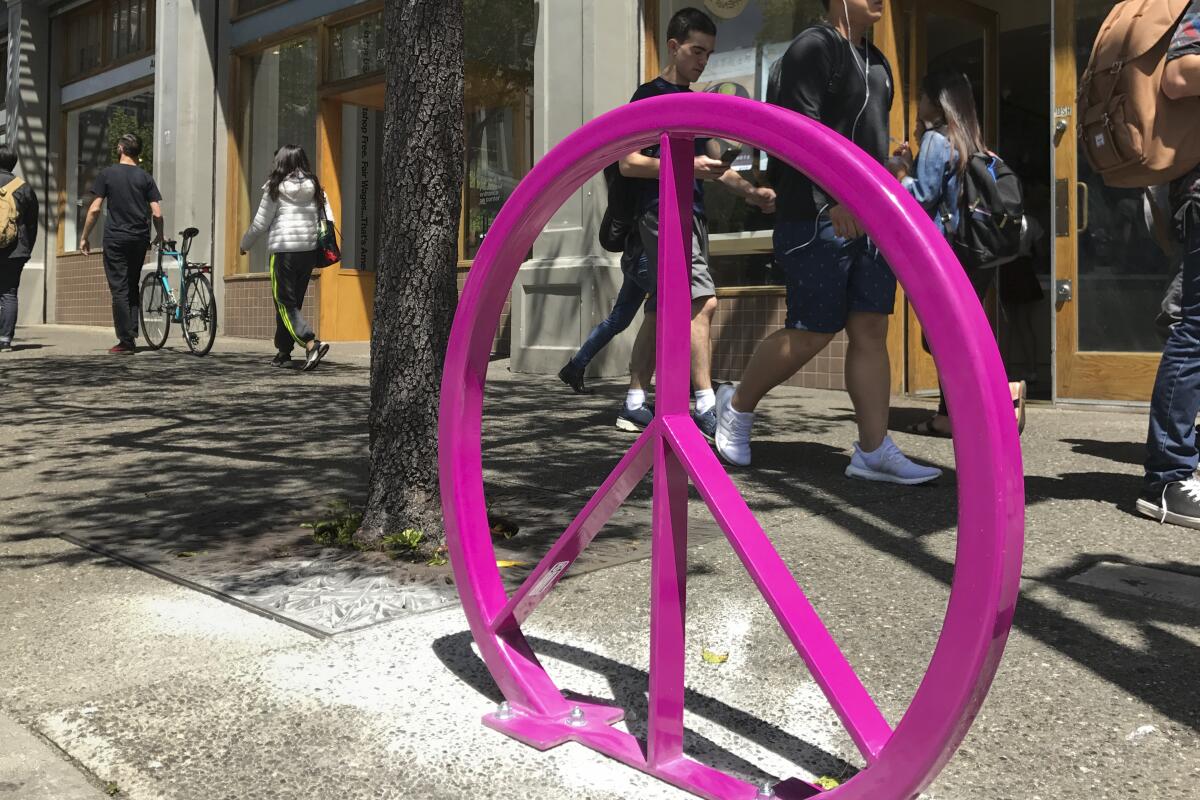
Population 117,145, stands 13 miles northeast of San Francisco, neighbored by Oakland and San Francisco Bay.
What makes it special: On the one hand, it seems the 1960s still haven’t ended for some folks on Telegraph Avenue. But the 2020s — and a campus population far more diverse than 60 years ago — are bringing major changes.
Bigger picture: Berkeley has leaned to the left for generations, of course. But lately it’s also getting taller.
The San Francisco Chronicle reported in May that at least 10 apartment buildings, from five to 14 stories each, were under construction in downtown Berkeley. These projects will reduce the city’s long-standing housing shortage, but as Chronicle Urban Design Critic John King has written, “None of them will make people forget Julia Morgan or Bernard Maybeck, whose atmospheric buildings of shingled wood and thick masonry enriched the local landscape a century ago.”
Moe’s Books on Telegraph Avenue goes back to 1959. Caffe Strada at Bancroft and College (“the crossroads of town and gown”) is known for its tree-shaded patio and espresso.
The campus: Founded in 1868, Cal (as the locals call it) endures as the senior campus of the UC system. Undergraduate enrollment: about 31,000. It covers 1,232 acres with landmarks including emblematic Sather Gate, the towering Campanile, meandering Strawberry Creek and the Berkeley Art Museum & Pacific Film Archive. Team name: Golden Bears.
Sample alumni: Eight-time Oscar-winning costume designer Edith Head, actor Gregory Peck, authors Joan Didion and Maxine Hong Kingston and restaurateur Alice Waters.
Cost of staying there: Berkeley’s 23 hotels average $211.41 per night. The 967 nearby Airbnb units average $159. (I like the Berkeley City Club hotel because it has a cool indoor pool by Julia Morgan.)
These spots in Mendocino, Humboldt and Del Norte counties offer food, fun and nature.



Local guides: Janet L. Byron and Robert E. Johnson
Co-authors of “Berkeley Walks,” a book offering self-guided walking tours through the city (a new edition is in the works)
What to do: Byron likes the Big C Trail. “From the top of the Berkeley campus you can hike to the Big C that overlooks the stadium,” she said. The round trip is just under a mile and yields wide views of the city and bay. “A lot of students like to go up there,” she said. “I’m not saying what the students do, but there are a lot of beer cans.”
Johnson urges campus visitors to pause at Cal’s imposing Doe Memorial Library, designed by John Galen Howard in 1911 and outfitted with three memorable reading rooms: the Morrison Library, North Reading Room and Heyns Reading Room. “Each is entirely different, and each is spectacular,” Johnson said. (Meanwhile, the campus Bancroft Library has Twain’s letters, notebooks and manuscripts.)
Beyond campus, Byron gravitates toward the rock parks of North Berkeley, a series of several boulder-strewn lots in residential areas that were considered unbuildable and donated to the city. She also endorses the city’s network of public paths and steps. The Berkeley Path Wanderers Assn. (berkeleypaths.org) maintains a detailed list of more than 120 pathways, with maps.
Where to eat and drink: This is no secret, Byron and Johnson say, but they recommend that stretch of Shattuck Avenue that some people call “the gourmet ghetto.” (There’s debate about that term, just as there’s debate over what to do with People’s Park.) Besides the much-celebrated Chez Panisse and the worker-owned Cheese Board Collective, the area includes the original Peet’s Coffee (2124 Vine St., opened in 1966) and the relative upstart Cafenated Coffee Co. (whose beans come only from women’s coffee farm cooperatives in the Americas and Africa).
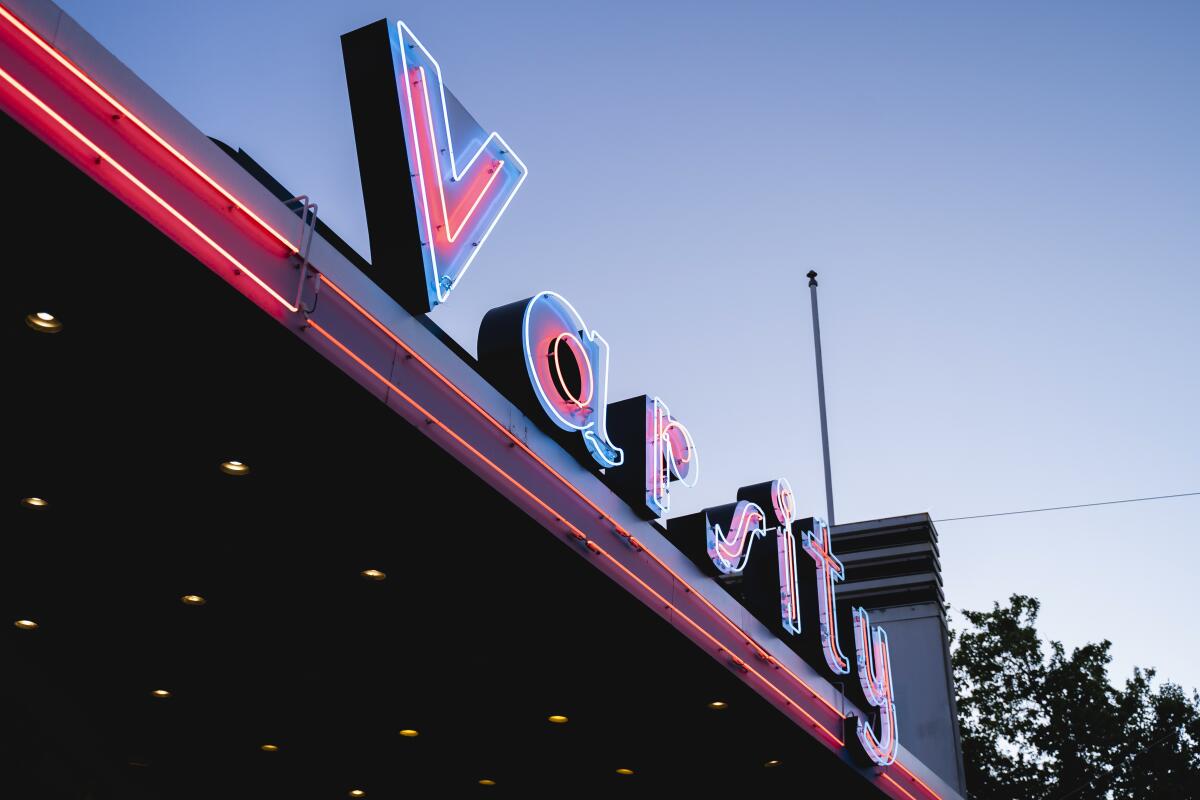
Population 66,799, stands 15 miles west of Sacramento.
What makes it special: While state government sputters and lurches nearby, this thinker’s exurb rides bikes, exudes calm and grooms future doctors, lawyers, veterinarians, computer scientists and winemakers. What other community would decorate the junction of campus and downtown with a 25-foot-tall needle made of used bicycle parts?
Bigger picture: The local quip is that there may be more bikes than people. To test this thesis, visitors can try the Davis Bike Loop, a 12-mile route that passes through the UC Davis campus and several neighborhoods. (Davis is very flat.)
The Davis Farmers Market, a great unifier of college and community, happens on Saturday mornings and Wednesday afternoons in Central Park, three blocks from the UC campus. And for nine weeks beginning Sept. 1, community leaders will try Thursdays in the Davisphere, another Central Park event, which will focus more on music, food and entertainment, including a beer and wine garden; it runs from 4 to 10 p.m.
For book people, there’s the Avid Reader Bookstore on 2nd Street, which has a nearby sibling, Avid Reader Active, specializing in games, puzzles, toys, cookbooks and crafts.
The campus: UC Davis, conceived as a “university farm” subsidiary of UC Berkeley in 1908, was granted stand-alone UC status in 1959. The campus is known for its programs in veterinary science, agriculture and forestry. Undergrad enrollment: about 31,200.
At 5,300 acres, the campus is more than 10 times the size of UCLA. It’s sedate and studious for much of the year (No. 24 on the niche.com “party school” ranking of California campuses). But it’s not quiet on Picnic Day, an annual spring celebration and open house that was forced into virtual form in 2020 and 2021, then returned in April. Throughout the year, live performances happen at the Mondavi Center. Team name: Aggies.
Sample alumni: Comedian and actor Hasan Minhaj, chef Martin Yan, former Fox broadcaster and Donald Trump campaign fundraiser Kimberly Guilfoyle.
Cost of staying there: Davis has 13 hotels that average $169.13 nightly. The 735 nearby Airbnb units average $164.


Local guides: Heidy Kellison
Founder of the blog DowntownNorCal.com and former columnist at the Davis Enterprise

Eddy U
Director of East Asian studies and sociology professor at UC Davis
What to do: Kellison and her dogs make a weekly walk through the UC Davis Arboretum and Public Garden, where oak and redwood groves throw ample shade and a looping path goes around the 100-acre arboretum’s waterway. U is a big fan of the Greenbelt, a citywide chain of parks and bike paths where he used to walk daily with his Shih Tzu, Jonnie. “People are very friendly,” he said.
Shopping downtown, Kellison likes vintage threads from Boheme Hip Used Clothing and new clothes from the boutique Pinkadot.
For getting around, U recommends Unitrans, a university-run bus service (many of them double-deckers) whose drivers are all students.
Where to eat and drink: Kellison likes Sophia’s Thai Kitchen (“great food, great bar, great time”); the University of Beer (where Kellison said her 24-year-old son has conducted an extensive study of brew and burgers); Tommy J’s Grill & Catering (a.k.a. Froggy’s among students); the Hotdogger, whose owner “has a terrific sense of humor that’s hot dog-based; and Hikari Sushi & Omakase. Hikari opened in spring, “run by a lovely husband-and-wife team from Myanmar,” Kellison said. “Significant attention to detail and just good vibes.”
U favors Tasty Kitchen on F Street (whose Cantonese cuisine reminds him of Hong Kong). For Japanese, he likes Zen Toro on E Street and the Mikuni Sushi location on 1st Street. And he has been impressed by the Burmese food at My Burma.
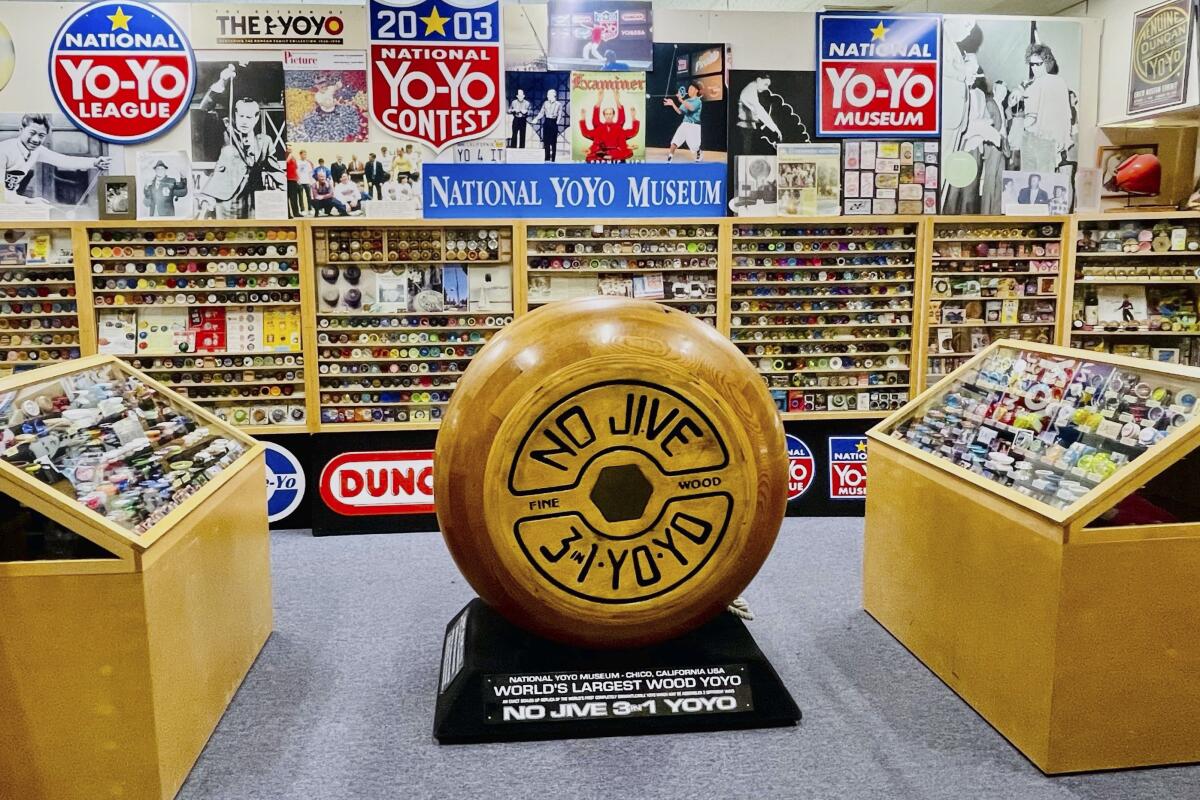
Population 102,338, stands 164 miles north of San Francisco, about 75 miles south of Redding and 75 miles northwest of Grass Valley.
What makes it special: A creek runs through it. A small-town feel suffuses it. And the nearest big city is far, far away.
Bigger picture: Chico, known for having lots of cyclists, is surrounded by farmland and forest, some of which burned in the massive Camp fire of 2018. The city’s biggest green space is 3,670-acre Bidwell Park, nearly 11 miles long. Downtown, there’s a Thursday Night Market outdoors from May through September, along with Friday Night Concerts al fresco from May through early October. The Hotel Diamond has been a stalwart downtown since 1904, two blocks from campus.
The campus: Chico State (a.k.a. CSU Chico), which began as 8 acres of John Bidwell’s cherry orchard, dates to 1887. Undergrad enrollment: about 15,700. Some of the oldest buildings on its 132-acre campus, including the graceful Kendall Hall administration building and its rotunda, are built with brick exteriors in Romanesque style. (There’s also an 800-acre University Farm and more than 4,000 acres of ecological reserves.) In Niche.com’s latest ranking of California’s “top party schools,” Chico State came in fourth. (USC was first.) Team name: Wildcats.
Sample alumni: U.S. Rep. Don Young, a Republican who represented Alaska in Congress for 49 years and died in March, and YouTuber Blaire White.
Cost of staying there: Chico’s 20 hotels average $134.37 per night. The 329 nearby Airbnb units average $176.

What to do: The Creek, a.k.a. Big Chico Creek, is “the heart and soul and life blood of this town,” Malowney said. It runs through long, narrow Bidwell Park, which splits the town in half and includes many swimming holes and tree-shaded trails.
Where to eat and drink: In the business district, the biggest homegrown brand is the Sierra Nevada Brewery, founded in Chico in 1980. The company has grown to include breweries on both coasts, a gift shop, the Chico Taproom (which serves pizza, sandwiches, salads and desserts) and Brewhouse Bar in Chico. The brewery tour lasts an hour and costs $8. Malowney also is a fan of the Sicilian Cafe, which has been on Main Street for more than 30 years (and will soon move to Wall Street).
Where to shop: Malowney likes the old-school feel of Collier Hardware on Broadway; the Made in Chico shop on West 3rd Street; and Satava Art Glass Studio, whose owner, Rick Satava, is known for his glasswork designs inspired by jellyfish. All these places, Malowney said, contribute to the feel of the town. “Some of the values we think are lost in modern culture, they’re hanging on a little longer here,” he said, citing the city’s outreach to victims of the 2018 fire. “I don’t know what the outcome is going to be, but we still have a lot of empathetic spirit here.”
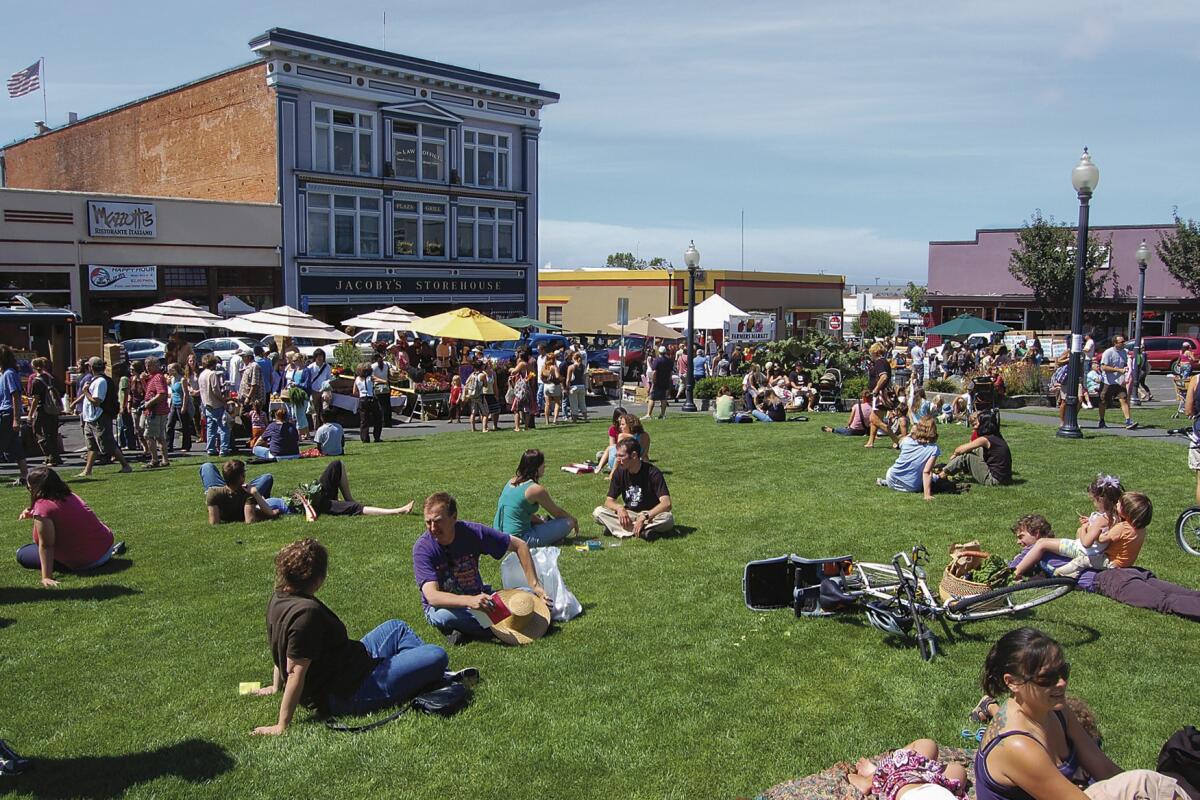
Population 19,114, stands 278 miles north of San Francisco, neighbored by Arcata Bay, the old logging city of Eureka and miles of forest, including Humboldt Redwoods State Park (to the south) and Prairie Creek Redwoods State Park (to the north).
What makes it special: The snug downtown, the surrounding forests and the changed relationship among humans, trees and plants. This former timber town is now a key element in the Emerald Triangle (the cannabis-growing counties of Humboldt, Mendocino and Trinity).
Bigger picture: Arcata’s heart is Arcata Plaza, a village square that’s home to vintage neon, a broad parade of humanity, but not President William McKinley, whose statue was hauled away in 2019 (after 113 years) amid mounting criticism over his role in grabbing Native lands.
Arcata Community Forest, about 790 acres of greenery and trails, is on the eastern side of town. Northtown Books on H Street goes back to 1965. The Salt Fish House restaurant gets high marks, as does Richard’s Goat Tavern & Tea Room.
The campus: Cal Poly Humboldt, founded in 1913 as a teachers college, was known as Humboldt State until January. Undergraduate enrollment: about 5,900, which university administrators are hoping to double in the next seven years. The campus covers 144 acres northeast of downtown, west of Arcata Community Forest. Team name: Lumberjacks.
Sample alumni: Author Raymond Carver and “SpongeBob SquarePants” creator Stephen Hillenburg.
Cost of staying there: Arcata’s 10 hotels average $130.81 per night. The 342 nearby Airbnb units average $211.

What to do: Kurth heads to the plaza at the center of Arcata every Saturday morning that he can. “They have an amazing farmers market. They almost always have live music. Hot food. Seafood...”
He also suggests the Humboldt Crabs. This is not an aspect of local wildlife. It’s a summer baseball team of college-age players that competes in city-owned Arcata Ball Park. And Crabs fans “are known for heckling. We have the most heckling crowds in the league, and it’s all family-friendly heckling. For instance, when the manager or pitching coach goes out to the mound, the whole crowd screams, ‘Touch his butt!’ There’s a whole heckling section you can sit in.”
Where to eat, drink and obtain weed: The Humboldt Patient Resource Center (a.k.a. HPRC) is one of the oldest continually running cannabis dispensaries in the U.S., Kurth said. It dates to 1999 and is known for pesticide-free weed, well-trained budtenders and being a female-owned business, Kurth said.
Kurth also admires the Alibi, an old-school bar and grill that faces Arcata Plaza and does a lot of breakfast business. “If you’ve had the kind of evening where you need a bloody Mary and chicken-fried steak for breakfast, the Alibi is the place to go,” said Kurth. Also, he’s not sure why, but eggs Benedict seems to be the unofficial breakfast of Humboldt County. Two spots in neighboring Eureka that do it well are the Golden Harvest Cafe (which has many vegetarian and vegan options) and the Greene Lily (a breakfast-and-lunch place in Old Town).
The footnotes: The population figures are from the 2021 U.S. census. Hotel data were supplied by industry analyst STR based on June rates, before taxes and extras. Airbnb numbers were collected July 29 from listings for weekends in September (also before taxes and extras). Enrollment figures based on U.S. News & World Report best colleges data for fall 2020.
Watch L.A. Times Today at 7 p.m. on Spectrum News 1 on Channel 1 or live stream on the Spectrum News App. Palos Verdes Peninsula and Orange County viewers can watch on Cox Systems on channel 99.
Sign up for The Wild
We’ll help you find the best places to hike, bike and run, as well as the perfect silent spots for meditation and yoga.
You may occasionally receive promotional content from the Los Angeles Times.